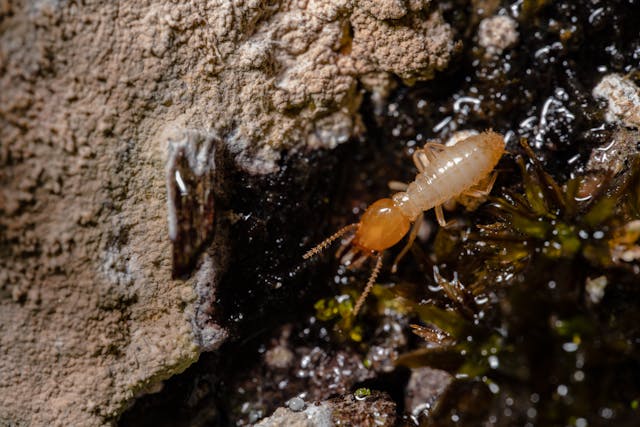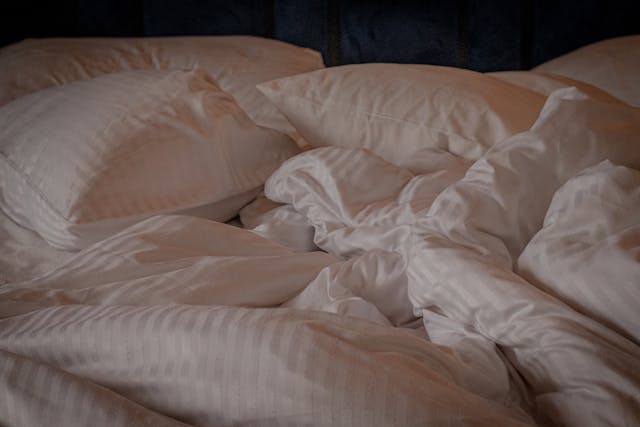If you’re looking for information on how exterminators are able to get rid of one of the most difficult household pests we have to deal with, you’ve come to the correct place.
In this post, we’ll go through the three main measures an exterminator would do to get rid of bed bugs from your house. You’ll also learn about the changes in bed bug treatment over the past 50 years. Some of the information you thought you knew about getting rid of bed bugs may turn out to be outdated.
Finally, we’ll go over the three crucial procedures an experienced exterminator will take before starting the bed bug control process. Indeed, knowledge is power. So let’s get you going so you can effectively fight off these annoying, embarrassing, and remarkably tough little pests.
Also bear in mind that if you require Cincinnati bed bug extermination, we can help.
3 Methods for Bug Elimination
There are many treatments for bed bugs. You can find conversations regarding mattress covers, furniture interceptors, vacuuming, and steaming on YouTube and in forums devoted to pest management.
Customers usually ask us about them in order to learn whether they are good solutions. the prompt reaction?
There is a space for each of them. When assisting a client to get rid of their bed bugs, we almost certainly combine a few of these methods. However, none of them are strong enough to have an impact on their own.
The only ways that successfully eliminate bed bugs are chemical treatment, cold treatment, or heat therapy. We’ll talk more in-depth about these three bed bug treatments in this article.
Chemical Therapy
It’s a reasonably common and understandable trait to need quick fixes. Ask the majority of sick patients whether they would prefer to receive therapy with a single pill or a series of physical therapies. Nine out of ten persons will take the drug for obvious reasons.
For insect control, the same is true.
We’ll give you a little history lesson right now. In the past, bed bugs were usually eradicated with a pesticide that was commonly applied by fumigation. Over the past 100 years, we have relied on a wide variety of hazardous substances, from sulfur to mercury chloride.
Then, dichlorodiphenyltrichloroethane (which, fear not, we also have difficulties pronouncing) appeared. DDT had affected everything. We now had a material at our disposal that would continue to eradicate not just your present infestation but also future generations of pests. The bed bugs may also be eliminated at all stage of their life cycles, from eggs to fully developed adults, thanks to this amazing material.
So it makes sense to ask: Why aren’t we using this as our default solution right now?
Two words: insecticide resistance.
In the 1960s, we thought bed bugs had all but disappeared from the US. But a serious outbreak is currently underway.
The root of the problem is worrying.
DDT-resistant bed bugs are becoming more prevalent. Science created many waves of DDT alternatives, such as lindane, chlordane, and diazinon, in an effort to keep one step ahead of the insects, but all of these eventually lost their effectiveness.
Because they are extremely adaptive creatures, bed bugs have a variety of behavioral, morphological, and biochemical resistance against chemical treatments.
In other words, they kept getting stronger.
The more chemicals we poured at them, the more chemically resistant they grew.
This brief history should help you understand why chemicals are no longer always the most efficient way to eradicate an infestation of bed bugs, even though we still use them to combat the problem. They are practical. However, we needed to locate better tools in order to eradicate bed bugs.
The requirement for multiple treatments when using chemicals almost always results in more harm being done to your home and a higher overall expense.
Cold Therapy
Once the entire extent of chemical resistance was identified, exterminators had to devise a new plan of attack.
The concept of adopting cold treatment was ours.
It really needs little explanation. Using a machine that spreads frozen carbon dioxide, the exterminator’s goal is to instantly snap-freeze and kill all bed bugs and bed bug eggs on a treated surface.
Because cold therapy focuses on drastic environmental change, it completely avoids the problem of chemical resistance and greatly reduces the risk of bed bugs developing biological resistance.
The fact that this is a non-toxic remedy reinforces the case for choosing cold over chemicals. With no residues and no harmful chemicals, the ecosystem will fare substantially better overall.
Do you expect a “but” to follow?
The following are the primary problems of using cold remedies: Despite the fact that they might not be able to build up a tolerance the way they have with pesticides over time, bed bugs are intrinsically quite resistant to the cold.
Have we mentioned how tough these things are?
Simply put, the best method for getting rid of bed bugs is not by utilizing cold. Even in temperatures as low as minus 15 degrees Fahrenheit, bed bugs may survive. Furthermore, you won’t know for sure that the population has been wiped off until several days have passed with temperatures in that range.
You are entirely accurate in thinking that would be difficult to execute.
Do you know that bed bugs can be found hiding in the crevices of pillows, mattresses, bed frames, clothing, and other items? By the way, all of that is insulation. The deeper it is buried, the harder it is to expose a bed bug to a lethal cold. The majority of bed bugs, which ought to annoy you the most, are unaffected.
Really not cool (or not cool enough).
The essential point is that although cold broadens our options somewhat, it is not a foolproof fix.
Heat Therapy
Heat follows. Again, you won’t need a complicated example to understand why this elimination process works.
To circulate hot air around a damaged house, fans are utilized in conjunction with a strategically positioned battery of extremely powerful heaters.
How hot a temperature are we talking about?
To increase the air’s temperature above 130 degrees Fahrenheit is the goal.
A bed bug population will start to decline, in accordance with the research, at temperatures of about 110 degrees. Over 120 marks the biological tipping point, at which bed bugs begin to almost instantly perish.
And it’s at this point that a practical solution is finally within reach.
Bed bugs are tough, but it turns out that heat is their biggest—and probably only—easily exploitable weakness.
The benefit of heat being more accessible than cold is another benefit.
Right now, 130 degrees Fahrenheit seems incredibly warm. Please don’t get us wrong; you wouldn’t want to stay outside in that heat. The ambient temperature of a house can be increased to this level of heat far more easily than it can be decreased to – 15 degrees Fahrenheit.
Additionally, did you know that insulation is a popular place for bed bugs to hide? Although not much, it can endure cold better than heat. Where chemicals and cold are less likely to reach, heat can get inside.
All of this raises the question, therefore. Is heating bed bugs to kill them the best way to get rid of them? Is it the answer we have all been looking for?
I guess it’s both yes and no.
Bed bug infestations are still difficult to manage. Bed bugs are essentially the pinnacle of ingenuity, tenacity, and spreadability among insects.
Heat, on the other hand, is one of the most effective treatments we have for going after the little irritants where they are most exposed.
In the vast majority of situations, augmentation with additional chemical treatments is part of the solution. Nevertheless, in light of our significant experience, heat is by far the most efficient way to get rid of bed bugs. Even though it isn’t the full solution, it should be part of every bed bug removal strategy.
Consider some fundamental logistics as well. Heat treatment is:
- The use of chemicals causes less disruption.
- Easier to implement than cold therapy.
- The option that the market has to offer that is both affordable and secure.
How to Choose a Trustworthy Exterminator
You now have more knowledge about bed bugs and the methods we can take to get rid of them. An essential extra element of the bed bug situation is the people who are eradicating the bed bugs.
How do you pick a good person?
This is a really important question.
There are a lot of people that advertise that they offer professional services, but it might be challenging to find the real deal – businesses with cutting-edge equipment, years of combined extermination expertise, and supported by enthusiastic entomological knowledge.
Prior to anything else, you should understand what a great exterminator isn’t.
3 Things to Know About Pest Control
No, a competent exterminator simply performs removal. Killing is not enough.
The primary goal of a skilled exterminator is to terminate the entire bug life cycle, starting with reproduction. Doing that is the only way to stop bed bugs from entering your home, not just tomorrow but also in six months.
#1: The best tool for an exterminator is knowledge of pests
A skilled exterminator will use just one method to do the job:
A common phrase is “This guy’s great because he has all the nasty, deadly chemicals.” Chemicals are a part of the picture, but for the reasons we outlined above, they are not the only part.
One bed insect removal method rarely works well on its own. However, a good exterminator would typically concentrate on integrated pest control, a process that painstakingly blends a number of extermination strategies to combat pests from many sides.
#2: The best solution is frequently a dual treatment-control strategy.
A competent exterminator will almost always choose the “nuclear” approach. Many of our clients believe that when we visit their home, we’ll arrive in hazmat gear and with weapons-grade poisons strapped to our backs.
Some people find this idea uncomfortable. It gives some individuals comfort.
The days of horrifying chemical bed bug treatments are passed, though, in actuality. It doesn’t work. It causes harm to the environment. Did we also mention that it fails outright? There are significantly more effective methods to eradicate bed bugs (such as our friend heat therapy).
#3: More harmful does not equate to more effectiveness.
Effective extermination involves:
- Questions: Where have you found evidence of insects? Have you recently purchased used furnishings? What happened in your home before you realized they were there? Do you have any bites? Do you have any pets? Allergies? The responses to all of these questions will play a significant role in determining a treatment strategy that will be effective for you.
- Investigation: and think of Sherlock Holmes when you think of Sherlock Holmes! A knowledgeable exterminator will do a forensic examination of your home to identify the precise type of the problem you’re having.
- Combinations: As years of experience (and a significant amount of excellent research) have consistently demonstrated, heat treatment should be a component of every bed bug extermination approach. However, in addition to the heat treatment, a knowledgeable bed bug exterminator will know how to gently administer extra chemical treatments.
Final Thoughts
So there you have it. The short version (too long, didn’t read) is as follows:
The methods used to eradicate bed bugs have changed quite a bit over time. Today, heat treatment is the gold standard. It also has the advantages of being safer and more cheap than chemical therapy alone, as you now know. To finally get rid of these disgusting little gremlins from your home, make sure the exterminator you select asks, looks into, and integrates.
If you keep these in mind, you’ll be well on your way to a home free of pests (and bug bites!).
Wish to learn more? If you’re unsure whether to use heat or pesticides to treat bed bugs, consult our detailed advice. Send us an email or give us a call if you live in California and are struggling with a bed insect infestation.





